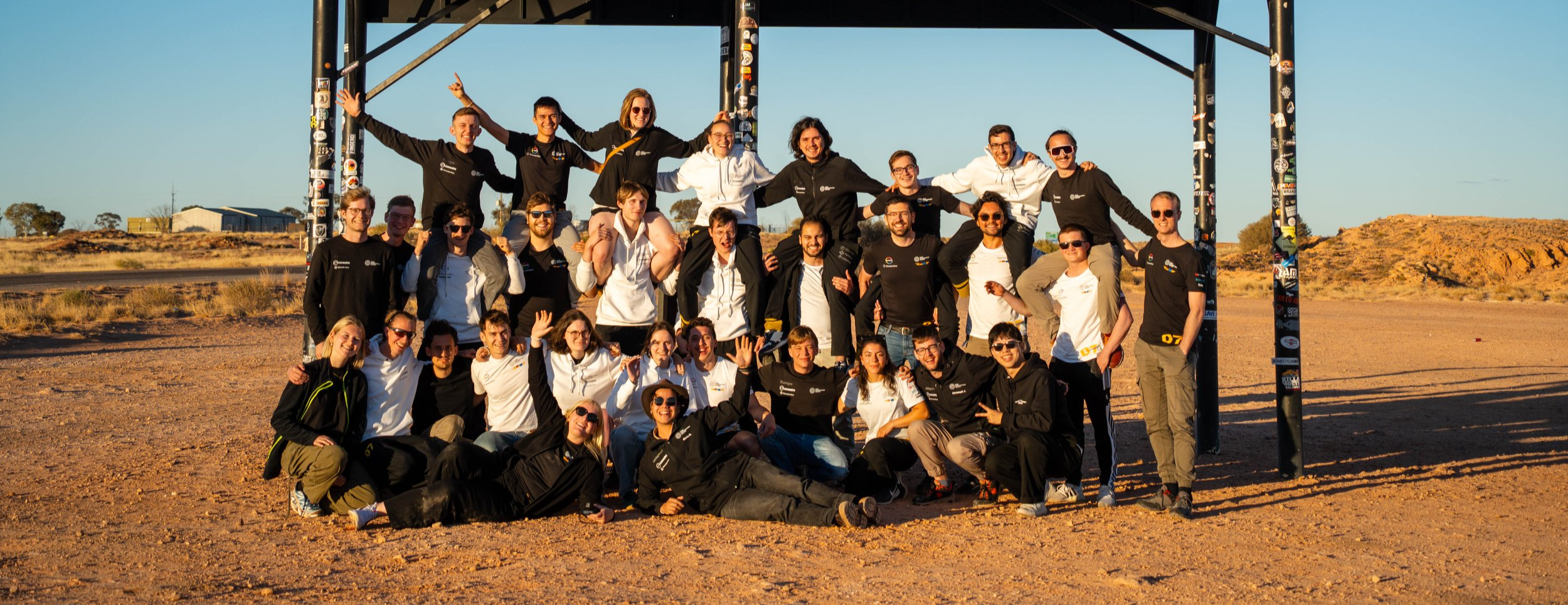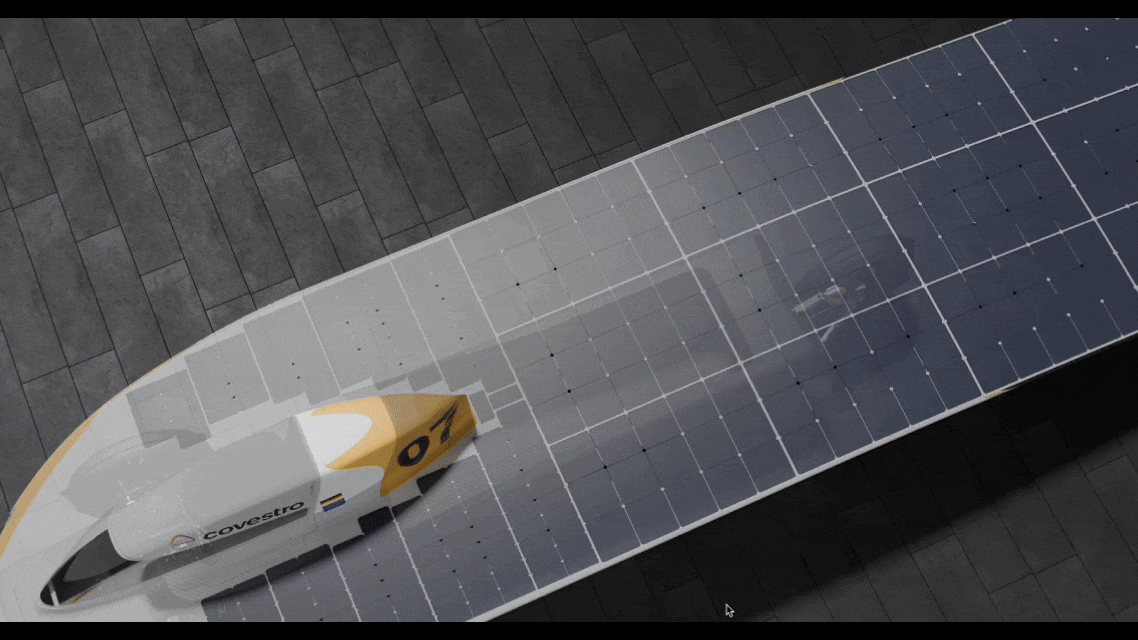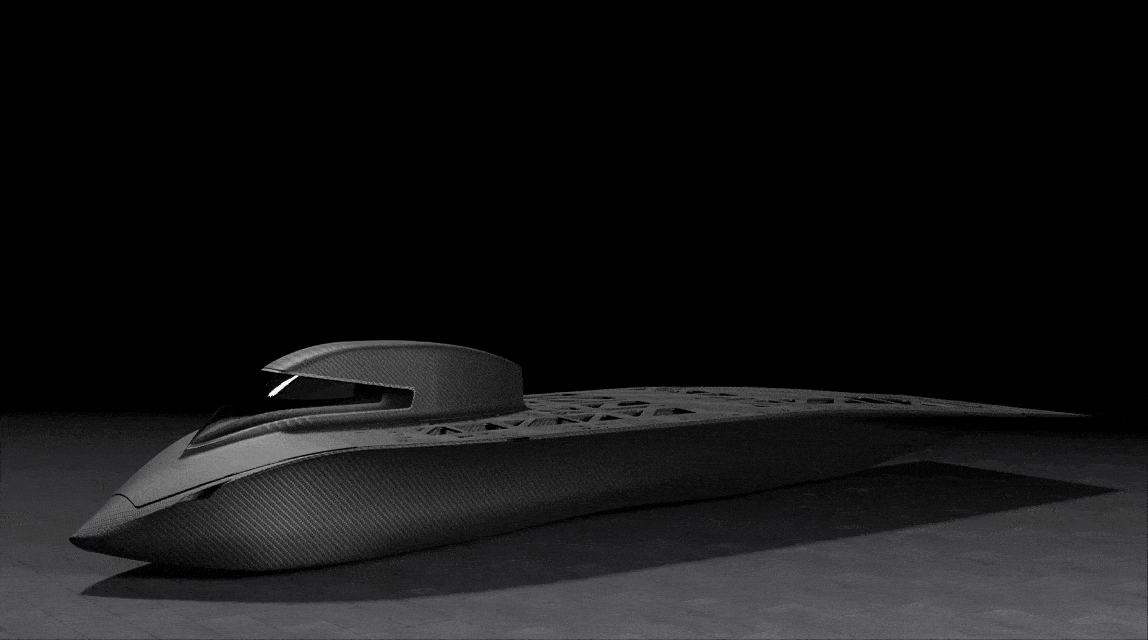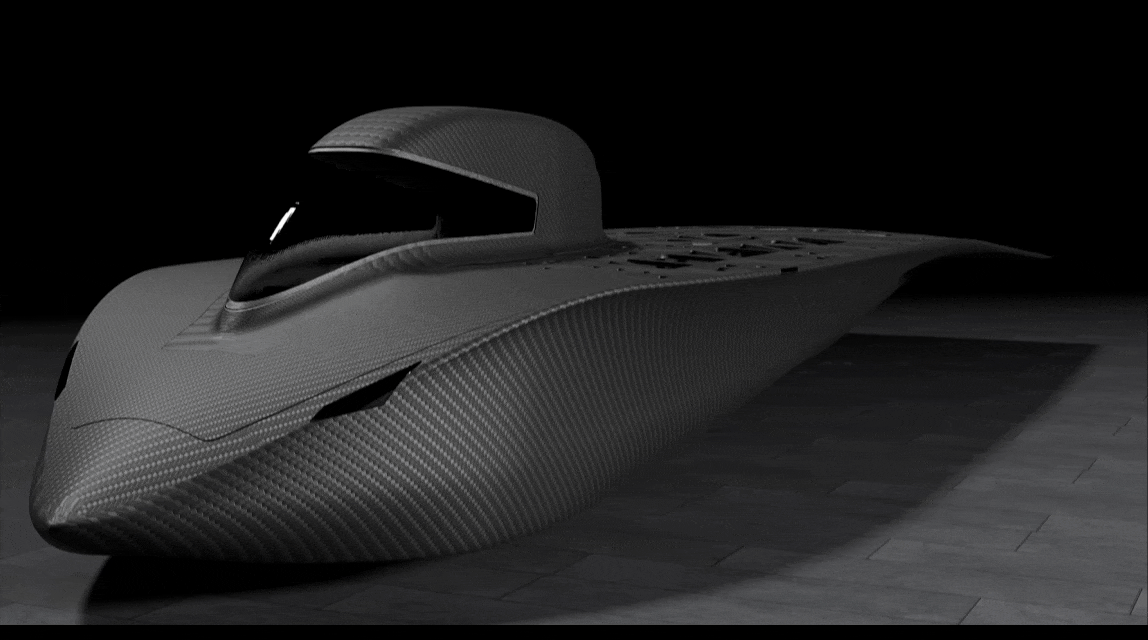Covestro Ӕthon
After two years of development and manufacturing, we are proud to present the fifth generation of our Sonnenwagen, Covestro Ӕthon. This vehicle marks the beginning of a new chapter for Team Sonnenwagen, as we face an unprecedented challenge: for the first time, the Bridgestone World Solar Challenge will take place two months earlier than usual. With significantly different weather and light conditions, this shift required us to rethink our approach and adapt every aspect of our car. Covestro Ӕthon is the result of countless hours of optimization, designed to meet these unique circumstances with maximum efficiency, reliability, and performance.

2025
Build year
Mono-Si cells &
Perowskit cells
Type of solar cells
3 kWh
Battery pack
–
Top Speed
6 m²
Area of the solar array
3
Number of wheels
<185 kg
Total weight
≈ 27 %
Efficiency of the solar cells
NMC
Battery technology

ROLLOUT.
26. May 2025, 13.30 pm
Das Liebig Aachen
Technical highlights.
Aerodynamics
This year our team had to deal with a big change in the regulations of the Bridgestone World Solar Challenge. One of the key changes was going from four to six allowed square meters of solar cells. Besides having a major impact on the size of our car it also changed the workflow of our aerodynamics department. In addition to trying to create the most aerodynamic shape, they also focused on finding the perfect balance between maximizing the solar energy collection area whilst keeping the drag as low as possible. Moreover, the aerodynamics department strongly focused on improving the aerodynamic stability of the car. Simulations and numerous iterations have guided the aerodynamics department to the optimal solution - improving key characteristics to ensure a stable drive through the crosswinds of the Australian outback. Such studies have played a significant role on the final shape of Covestro Æthon.
Structure
After finalizing the shape of our car, it was time for the structure department to take over. The members of this department designed and simulated our composite components to ensure they are strong and rigid enough to withstand all potential loads while keeping the car as lightweight as possible. In addition to the design, the structure department also supervised the manufacturing process of their respective components. Here, the size of our new car posed a significant challenge, as our model had to be broken down into components that could fit into the CNC machines and autoclaves we had access to. Due to the change in the date of the Bridgestone World Solar Challenge, we also had two months less preparation time, which resulted in a very tight schedule — six months with 14 shifts per week, requiring a minimum of two to three shifts per week from each team member, often including extra night shifts. In the end, we milled 55 pieces, completed 21 vacuum infusions, and were ready in time to assemble Covestro Æthon. At Team Sonnenwagen Aachen, we strive to enhance the safety for our drivers with each car. In addition to designing and manufacturing a secure monocoque, an additional layer of a Kevlar-Carbon hybrid woven prepreg material was laminated into the monocoque to ensure additional splinter protection. To dampen a potential frontal and lateral impact, additional energy absorbing foam blocks were mounted to the monocoque.
Electrical engineering
Now that the body of our car was completed, it was time to bring Covestro Aethon to life. Since we’ll be driving from north to south through Australia during winter, the sun will mostly be behind us as we travel along the Stuart Highway. That’s why we decided to place the majority of our solar cells on the rear of the car. This setup also prevents the canopy from casting any shadows on the array. To push the strategic placement of the cells to the maximum, our electrical department chose to build a lid containing two kinds of cells: around the canopy, you can find regular silicon solar cells, while newer Tandem-Perovskite cells were placed at the rear. The purpose of this is to maximize energy input around the canopy. Simply put, it helps both with playing Tetris of placing the smaller cells, and maximizes energy output when the canopy casts a shadow on the cells. To describe this unique arrangement, our electrical department jokingly calls this a “Tandem-Tandem lid”. This configuration allows us to achieve up to 27%. This time, our self-developed battery, which stores the collected energy, features a modular design. This enables us to easily replace defective modules during testing. One major rule change affecting the battery is the limitation to store a maximum of 3 kWh of energy. In previous years, battery limitations were based on weight, not energy.
We were also able to improve our self-developed motor. The design of the axial flux machine underwent optimizations which allowed us to improve efficiency as well as the mechanical ruggedness.
Mechanical engineering
To turn the chassis handed over by our structural team into a race-ready vehicle, one key element is essential: the suspension system. Due to Covestro Æthon being significantly larger than last season's car, the wheelbase and track width had to be increased to ensure stability. This brought the challenge of adapting our steering system to the new dimensions – including wider-opening wheel covers and larger steering angles. These changes required close collaboration between the suspension, steering, and aerodynamics teams. Only continuous coordination enabled us to develop a cohesive and functional overall concept.
Another step forward this season is that, for the first time, sensors for measuring suspension travel and acceleration have been fully integrated into our electrotechnical system. This allows us to evaluate our design decision and lays an important foundation for future data-driven improvements.
Driving Strategy
This year, our driving strategy department played a key role right from the start of the season. They worked closely with the aerodynamics department during the design phase of Covestro Aethon’s outer shell, using simulations to find the perfect balance between a flat solar array for optimal sun exposure and an aerodynamically efficient shape. During the race, the department members will be part of the “Chase”, the car that follows Covestro Aethon directly behind. From there, they will have a constant data exchange with the solar car, allowing them to monitor all relevant information such as the current energy consumption and state of the battery. Based on this information, as well as external data from precise weather forecasts, the driving strategy team makes critical race decisions to maximize efficiency. With the challenges of the Australian winter and a battery that's only half the size of last year’s, the driving strategy is more important than ever to help us finish first in Adelaide.





